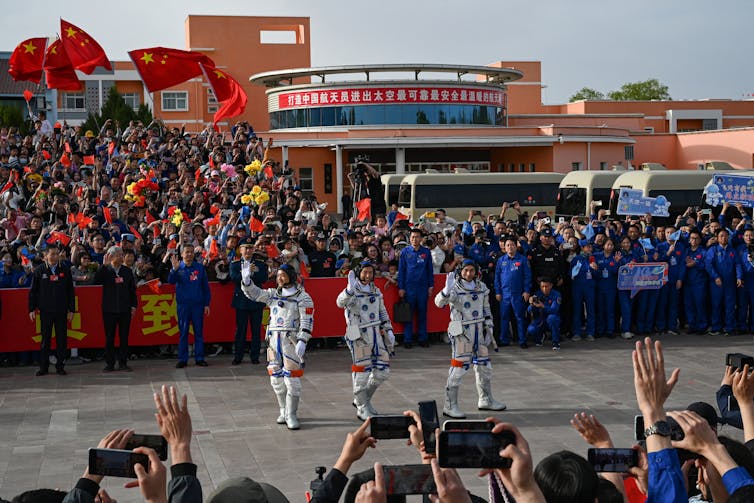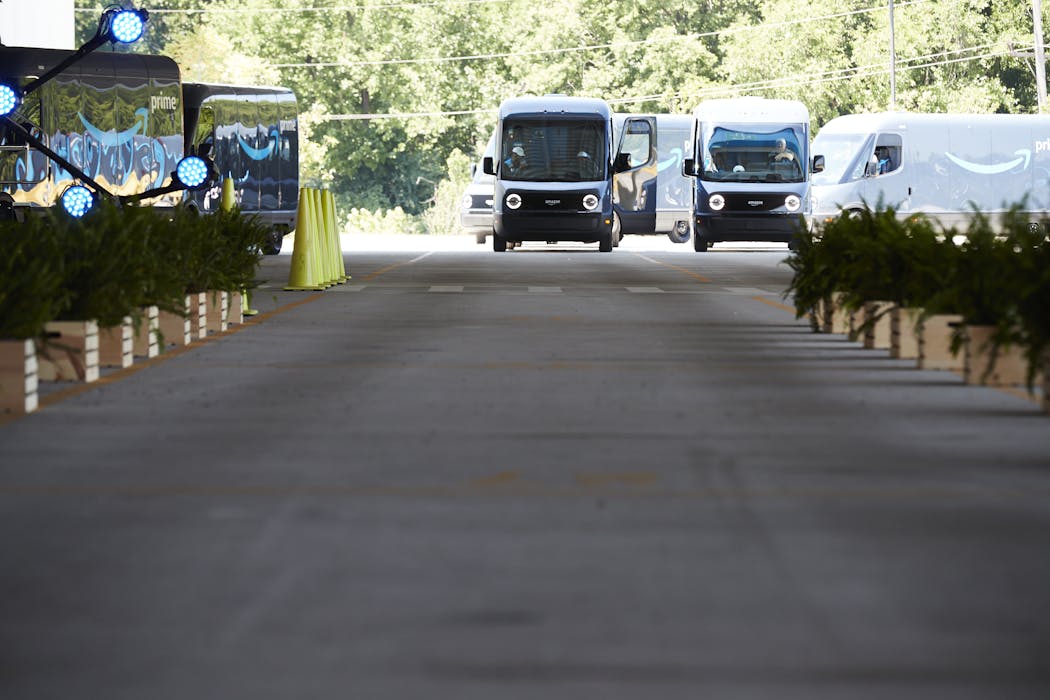Source: The Conversation – UK – By Bamo Nouri, Honorary Research Fellow, City St George’s, University of London
Iraqis went to the polls on November 11 to vote in parliamentary elections. Preliminary results put the coalition of Iraq’s prime minister, Mohammed Shia al-Sudani, in the lead. But no bloc has won anything close to a governing majority in the 329-seat parliament.
The country’s next government will be, as has been the pattern since the fall of longtime dictator Saddam Hussein in 2003, assembled over the coming months through elite bargaining rather than a clear voter mandate. Elections in Iraq have turned into a ritual of continuity rather than a vehicle for change.
For the first time in years, officials celebrated what appeared to be a rise in voter participation. Iraq’s electoral commission announced a turnout of just over 55% of registered voters – a sharp jump from around 36% in the last parliamentary election in 2021. However, this figure masks a more sobering truth.
Many of Iraq’s 32 million eligible voters did not register. Only 21.4 million Iraqis updated their information and obtained a voter card, a decrease from 24 million in 2021. This narrower registry automatically inflated turnout.
More than 1.3 million Iraqis – mostly soldiers, police and displaced people – also cast early ballots. The electoral commission announced that turnout in the early voting process was 82%. Counting these figures first gives the impression that overall turnout was far healthier than the public mood suggests.
In fact, voter turnout in Iraq has fallen steadily over the past two decades. More than 79% of registered voters turned out in elections in December 2005, the first to be held after the US-led invasion of 2003. This fell to about 62% of voters in elections in 2010, while just 44% of voters cast ballots in 2018. Voter turnout dropped again in 2021.
Each election has recycled the same elite faces, the same sectarian bargains and the same patronage networks. For most Iraqi citizens, voting no longer feels like participation – it feels like performance.

Wikimedia Commons
A key part of Iraq’s electoral theatre is a simple exchange: jobs in return for votes. The country’s oil-based economy funds a vast public payroll of around 4 million employees, making the state the largest employer in the country and the main source of income.
The International Labour Organization estimates that nearly 38% of Iraq’s workforce (3.3 million people) is employed in the public sector, while between 600,000 and 700,000 more receive their salaries from state-owned enterprises kept afloat by federal subsidies.
There are also 3.1 million pensioners in Iraq and about 1.5 million households that collect monthly social protection stipends. Against this backdrop, the 12 million ballots cast in the 2025 election represent a workforce whose income, benefits or family security largely depend on government payrolls.
In such a system, the boundary between voter and employee blurs – making the ballot as much a mechanism of compliance as of choice.
Political parties in Iraq also control ministries as private fiefdoms, distributing jobs and contracts to supporters. Public servants know that salaries, promotions and transfers often depend on party affiliation.
Iraq’s former prime minister, Haider al-Abadi, captured this dynamic bluntly in a pre-election interview in October. He said that Iraqi elections had become a process of “buying votes”.
Politics of exhaustion
In 2019, Iraq experienced the largest protest movement in its post-2003 history. Thousands of young Iraqis demanded an end to sectarianism and corruption, briefly rekindling faith in change. But that hope was crushed when security forces responded to the demonstrations violently, killing more than 600 protesters.
The assassination of Safaa al-Mashhadani, a Sunni parliamentary candidate, ahead of the election in October 2025 shows how dangerous dissent remains. Al-Mashhadani was killed in a car bombing in a town north of Baghdad after publicly criticising Iranian-backed militias, in what analysts described as a targeted attack intended to weaken Sunni and reformist voices ahead of the election.
For many Iraqis, especially young people, such risks make participation feel futile. Research shows that 46% of young people in Iraq now want to emigrate, seeing politics not as a pathway to influence or opportunity, but as something that exposes them to danger and intimidation.
Elections persist, but belief has gone. Iraq’s democracy endures as choreography – maintained for legitimacy, emptied of conviction.
The 2025 election reveals a crisis deeper than disillusionment. Iraq’s problem is the internalised belief that nothing will ever change. Psychologists call this state “learned helplessness”, when repeated disappointment teaches people that their actions make no difference.
Breaking this cycle will require substantial reform. Economically, Iraq needs to reduce its dependency on oil revenues and shrink the clientelist public sector. As I recently argued elsewhere, Iraq needs a genuine free-market more than ever. Politically, Iraq requires accountability that reaches those at the top.
Until these changes are made, Iraq’s elections will remain hollow rituals. The oil will flow, salaries will be paid and the ballots will be counted. But beneath the choreography of democracy lies the silence of a society that has forgotten how to hope.
![]()
Bamo Nouri does not work for, consult, own shares in or receive funding from any company or organisation that would benefit from this article, and has disclosed no relevant affiliations beyond their academic appointment.
– ref. Iraq’s 2025 elections reveal a democracy without belief – https://theconversation.com/iraqs-2025-elections-reveal-a-democracy-without-belief-269553















